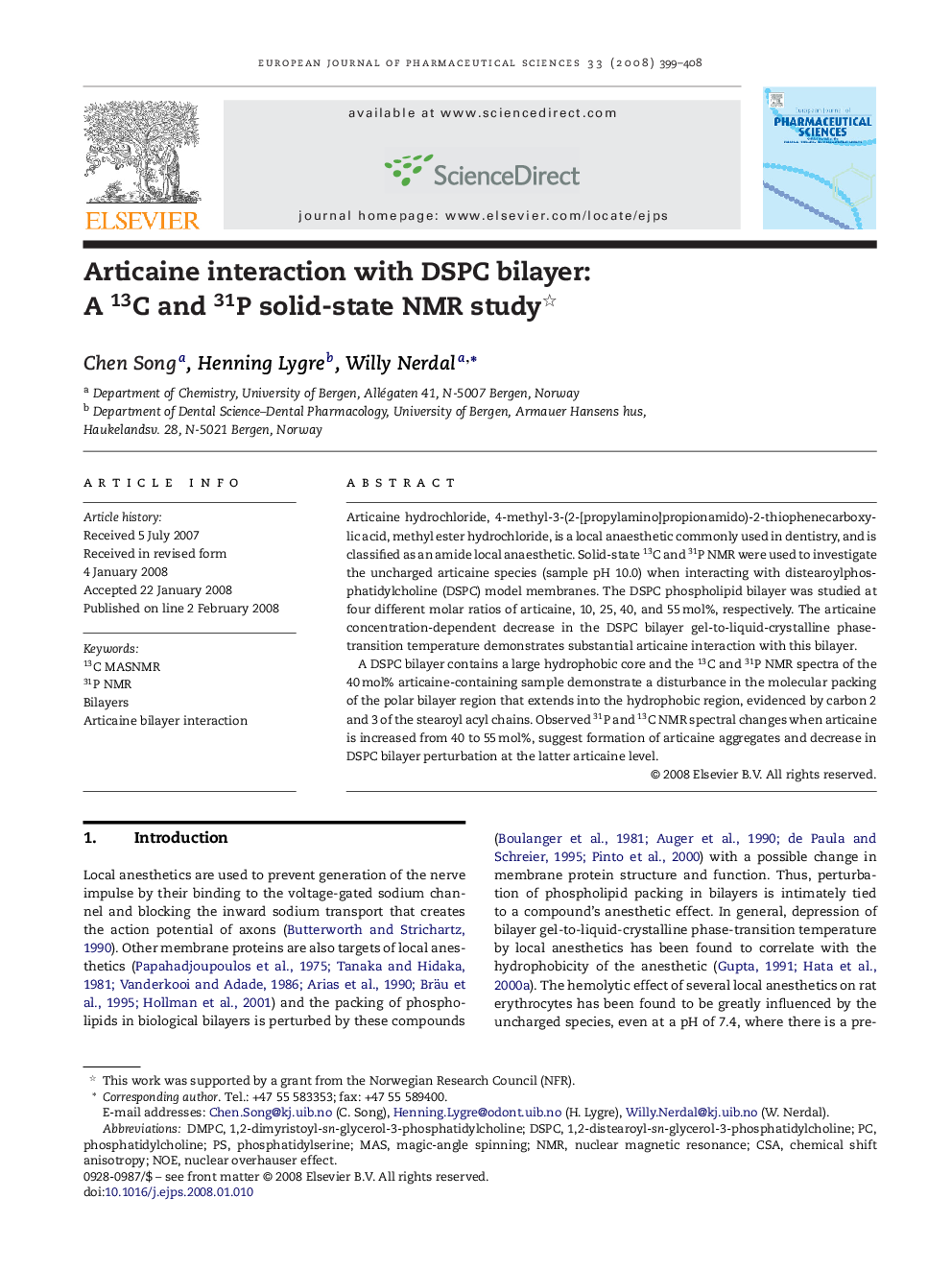| Article ID | Journal | Published Year | Pages | File Type |
|---|---|---|---|---|
| 2481809 | European Journal of Pharmaceutical Sciences | 2008 | 10 Pages |
Articaine hydrochloride, 4-methyl-3-(2-[propylamino]propionamido)-2-thiophenecarboxylic acid, methyl ester hydrochloride, is a local anaesthetic commonly used in dentistry, and is classified as an amide local anaesthetic. Solid-state 13C and 31P NMR were used to investigate the uncharged articaine species (sample pH 10.0) when interacting with distearoylphosphatidylcholine (DSPC) model membranes. The DSPC phospholipid bilayer was studied at four different molar ratios of articaine, 10, 25, 40, and 55 mol%, respectively. The articaine concentration-dependent decrease in the DSPC bilayer gel-to-liquid-crystalline phase-transition temperature demonstrates substantial articaine interaction with this bilayer.A DSPC bilayer contains a large hydrophobic core and the 13C and 31P NMR spectra of the 40 mol% articaine-containing sample demonstrate a disturbance in the molecular packing of the polar bilayer region that extends into the hydrophobic region, evidenced by carbon 2 and 3 of the stearoyl acyl chains. Observed 31P and 13C NMR spectral changes when articaine is increased from 40 to 55 mol%, suggest formation of articaine aggregates and decrease in DSPC bilayer perturbation at the latter articaine level.
